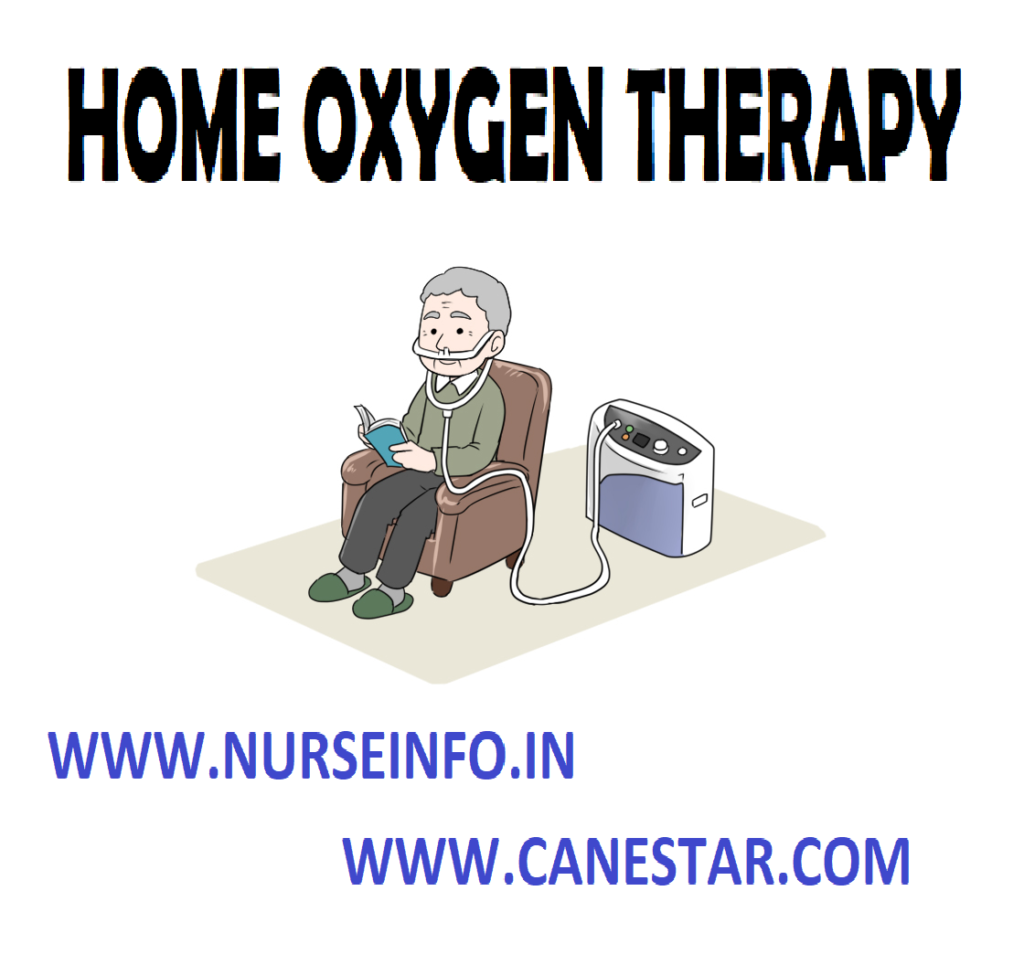HOME OXYGEN THERAPY
Home oxygen therapy is available to clients who require continuous oxygen therapy at home. It is usually delivered by nasal cannula
Purpose: to provide continuous oxygen therapy for patients
Preparation
- Explain the procedure step by step to the patient and their relatives to confidence
- Explain about the safety precautions
Classification
In this therapy, 3 types of oxygen is used:
- Compressed oxygen
- Liquid oxygen
- Oxygen concentrations
Equipment
- Nasal cannula equipment
- Primary and portable liquid oxygen source for ambulation
Procedure
- Explain the procedure to client and family
- Wash hands
- Demonstrate steps for preparation ad completion of oxygen therapy
- Prepare primary and portable oxygen
- Place primary oxygen source in clutter free environment
- Check oxygen level of both sources by reading gauge on top
- Check oxygen gauge to determine fullness of portable source
- Select prescribed rate
- Connect nasal cannula and O2 tubing to oxygen
- Have client and family perform each step with guidance from the nurse
Patient Education
- Explain or teach about the home oxygen therapy
- The nurse coordinates the efforts of the client and family, home call nurse, home respiratory therapist, and home oxygen equipment vendor
- The nurse must assist the client and family in learning about home oxygen and ensure their ability to maintain the oxygen delivery system
Complication: bulky, possibly unsightly, frequent refilling, necessary with continuous use
CONSIDERATIONS
- Supplemental oxygen relieves hypoxemia but does not improve ventilation or treat the underlying cause of the hypoxemia. Monitoring the SpO2 indicates oxygenation not ventilation. Therefore, beware the use of high FiO2 in the presence of reduced minute ventilation
- Many children in the recovery phase of acute respiratory illnesses are characterized by ventilation/perfusion mismatch (e.g. asthma, bronchiolitis, and pneumonia) and can be managed with SpO2 in the low 90’s as long as they are clinically improving, feeding well and do not have obvious respiratory distress
- Normal SpO2 values may be found despite raising the blood carbon dioxide levels (hypercapnia). High oxygen concentrations have the potential to mask signs and symptoms of hypercapnia
- Oxygen therapy should be closely monitored and assessed at regular intervals. Therapeutic procedures and handling may increase the child’s oxygen consumption and lead to worsening hypoxemia
- Children with cyanotic congenital heart disease normally have SpO2 between 60-90% in room air. Increasing SpO2 >90% with supplemental oxygen is not recommended due to risk of over circulation to the pulmonary system while adversely decreasing systemic circulation. However, in emergency situations with increasing cyanosis supplemental oxygen should be administered to maintain their normal level of SpO2


